As we wandered around Raymond Island gazing up into the trees at the Koalas, we couldn’t help but laugh. They look like large teddy bears, but they are not bears as the first European explorers thought, they are marsupials and carry their young in pouches.
It was apparent that they were feeling the near 40ºC heat. One of them was practically draped over a branch, letting its limbs hang out, in an attempt to cool off. I couldn’t tell if this method of cooling off was working, but its pose made it look like it was lazily lounging an indolent afternoon. Or maybe they were just drunk on the eucalyptus leaves, they eat these toxic leaves and then sleep 19 hours a day. They are so adorable.

It was likely this impression that made me think that they move slowly like the sloths in Latin America. We were surprised by their agility as we watched one old Koala, disturbed from his sleep by a child screaming on a bicycle. The Koala looked around then climbed over and jumped to another branch.
Koalas near extinction
Koalas were hunted near to extinction for their fur in the early 20th century. In 1952, 32 Koalas were moved to Raymond Island for preservation. The island itself is only 6 km long and 2 km wide and overpopulation can quickly get out of hand. Their numbers are monitored and on numerous occasions, Koalas have been collected and moved elsewhere. Despite having moved hundreds off the island since 1952, the populations in 2013 was 305 koalas.
We loved watching these cuddly creatures. But it was hot. Whenever we stepped out of the shade provided by the trees, we felt like we were baking. After seeing numerous Koalas and enjoying the island we hopped back on the ferry with every intent to jump in the bay to cool off. I looked down into the water under the ferry and watched jellyfish gently undulating just below the surface. They looked like blue blubber jellies, a harmless species or so I’ve read.
“Do the Koalas ever become a nuisance,” we asked the local from Raymond Island sitting next to us on the ferry. We loved seeing them in the trees, but too much of anything can sometimes be overwhelming so I wondered how the locals felt.
“Oh no, we love them,” she said smiling and I was happy to hear this.
Freezing toes and sweating scalp
Back on the mainland, we stopped at the cafe next to the bay where we were parked. We inquired about the safety of swimming in the bay.
“Oh, this is a great place to swim, no sharks or dangerous creatures. I jump in right here near the boats all the time,” said the young lady behind the counter. We walked across the street intending to jump in ourselves.
On the shore, I stepped into the water and gasped. It was frigid. As I walked in further my toes began to go numb. When the water was just over waist high I inhaled sharply and involuntarily, the drastic temperature change was a shock to my system. We did go for a little swim but didn’t just jump in, it was a gradual entry. I’ll leave the “jump right in” for Antarctica where they have a shot of vodka waiting for each survivor.
Driving out of the heat
The thermometer in Lil’ Beaut read 106ºF ( 41ºC). It was slightly cooler inside Lil’ Beaut than it was outside but still stifling. I guess all the solar protection I installed in the windows during our break in Kangaroo valley was doing its job.

We decided to head west toward Port Albert. A little place about 45 min from us was reporting temperatures 20 degrees cooler and closer to the promontory that we wanted to explore next.
On our way to Port Albert, the winds blowing from the hot interior of Australia buffeted our bus. The air felt like the gusts that come out of the oven door when checking to see if the turkey is done. I prefer the warmth of this dry heat to the strangling suffocation of humid heat, but the dry heat did seem to sap energy directly out of us as it blew through.
The vast red interior of Australia is actually a bit like an oven. The desert in the middle turns the energy of the sunshine into heat. This heated air rises as cooler, denser air descends and the winds of the oven begin to move.
We watched the trees around us bending to the unseen power blowing towards the ocean from the red center of Australia. The cattle grazed among the yellow fields and large round golden bales of hay decorated the horizon.
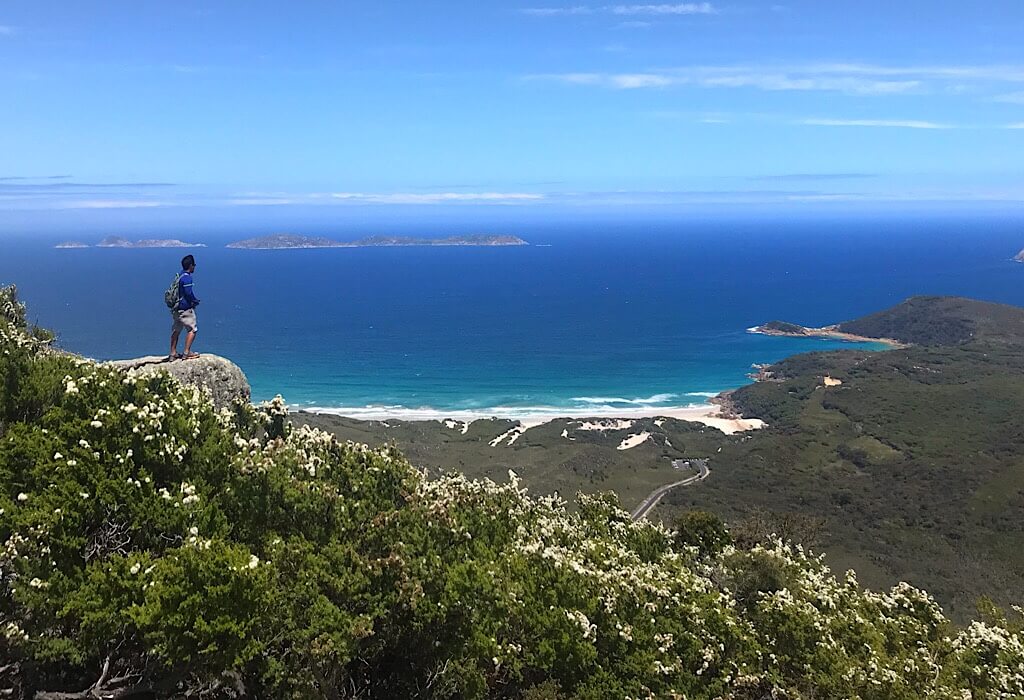
Winds of change
We felt it before we saw it, like a whisper of a bird’s wings swooping from behind. The trees began to lean towards the interior. The wind had changed and their origin was now coming off the polar caps of Antarctica. I watched as the thermometer dropped twenty-three degrees. Light rain soon followed cooling every surface.
By the time we parked at our new campground, the sea looked angry. We put on our jackets and winter knit hats and walked around. I shivered in the outside air. We are thankful over and over again for our choice of Lil’ Beaut over a smaller van. Cooking outside with this wind would be impossible. The stovetop flame in our small kitchen helped to heat up Lil’ Beaut. We settled in to watch a movie in our bedroom (the bed) in the back of the bus as Lil’ Beaut rocked back and forth in the wind – at least this time it wasn’t a wombat rocking the bus!
Wilson’s Promontory
Wilson’s Promontory (or simply Wilson’s Prom) is the southernmost tip of Australia’s mainland. It stretches out into the Bass Strait that separates the mainland from Tasmania.
Wilson’s Prom is a 50,000-hectare (125,000-acre) national park with white sand beaches, granite mountains, rain-forests, and abundant wildlife.
As we drove into the prom emus looked up from their grazing in the field to watch us pass. Lil’ Beaut began to climb the first mountain and I looked back at the swath of land connecting the promontory to the mainland. It lay low and golden, a small plain of swamp and mangrove-filled land with mountains linking the distance to the east. As the view expanded I began to grow excited about our day in the Prom.
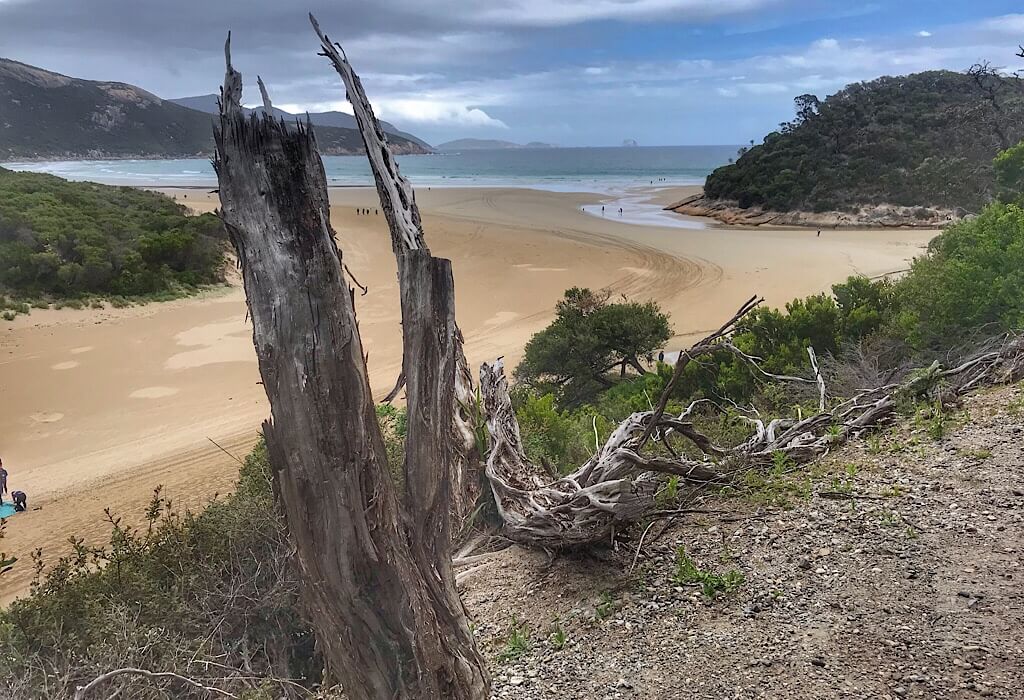
Parking along the side of the road near the top of the first mountain we followed signs for Sparkes Lookout. The small dusty trail gradually climbed as it wove its way around the mountainside. Deep blue waters from the Bass Strait began to peek into view. Rain clouds in the distance blurred the distant ocean horizon.
Three barren rocky islands loomed offshore, their grey and muted reds a stark contrast to the deep blue waters around it. The sea was so calm it melded with the sky making the islands appear to float in the air.

Surviving the flames
The trees around us wore charred skin, blackened from the last brush fire. Gaping wounds in the bark dripped sap as red as blood onto the rocks below. Despite their scars they survived and continued their struggle reaching the sky with their branches for the nourishing power of the sun, the same sun that gives energy to the wind as it heats the red barren interior of this land.
Next, we climbed Mt Bishop up through its rain-forest and to its granite boulder edge for 360-degree views of the outer edges of the prom and the Bass Strait stretching beyond sight. At the top we climbed out onto the huge granite boulders and braced ourselves against the frigid wind cutting through our coats. The sea around us was no longer calm but speckled with white caps.
The prom has beautiful hikes and white squeaky beaches. The sand here really does squeak under our thongs (flip-flops, that is) because it is made of quartz.
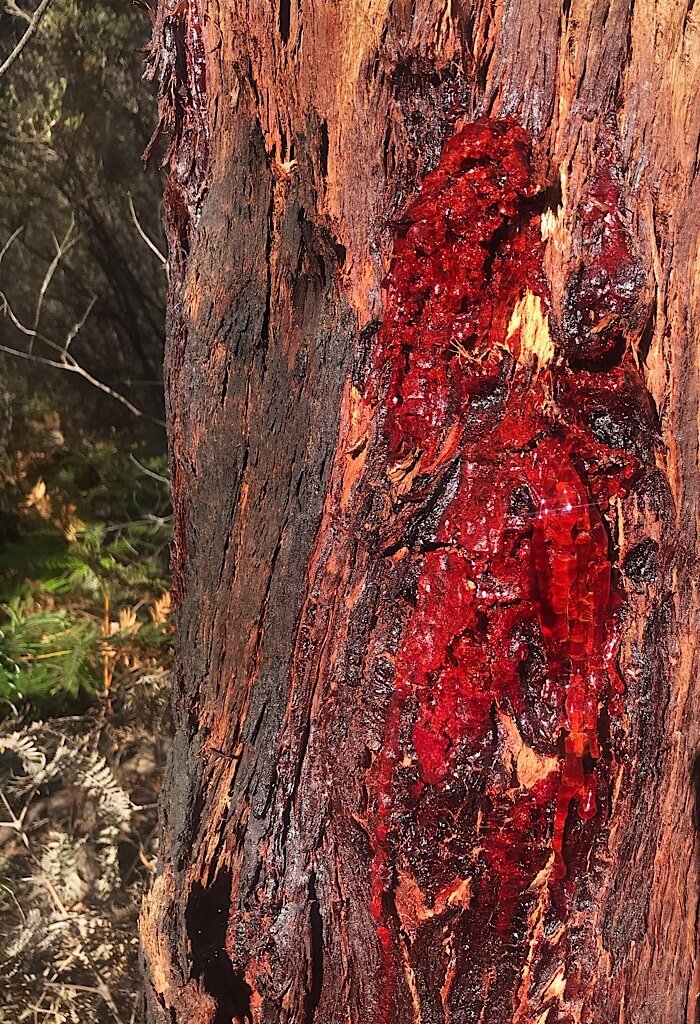
Philip Island
A few people told us that we just had to see Philip Island, but often that was all they said. Since every traveler is different merely saying “I had to see a place” is not enough. Lots of people tell us we have to see Paris and honestly I can’t think of anything appealing that I’ve heard about it to inspire me to go.
We parked next to a van the night before on our way here and once again a lady told us that we had to see Philip Island, so I asked why.
She was speechless for a moment then she shrugged and shook her head.
“I don’t know, it’s just wild,” she said. That convinced me and we found that she was exactly right.
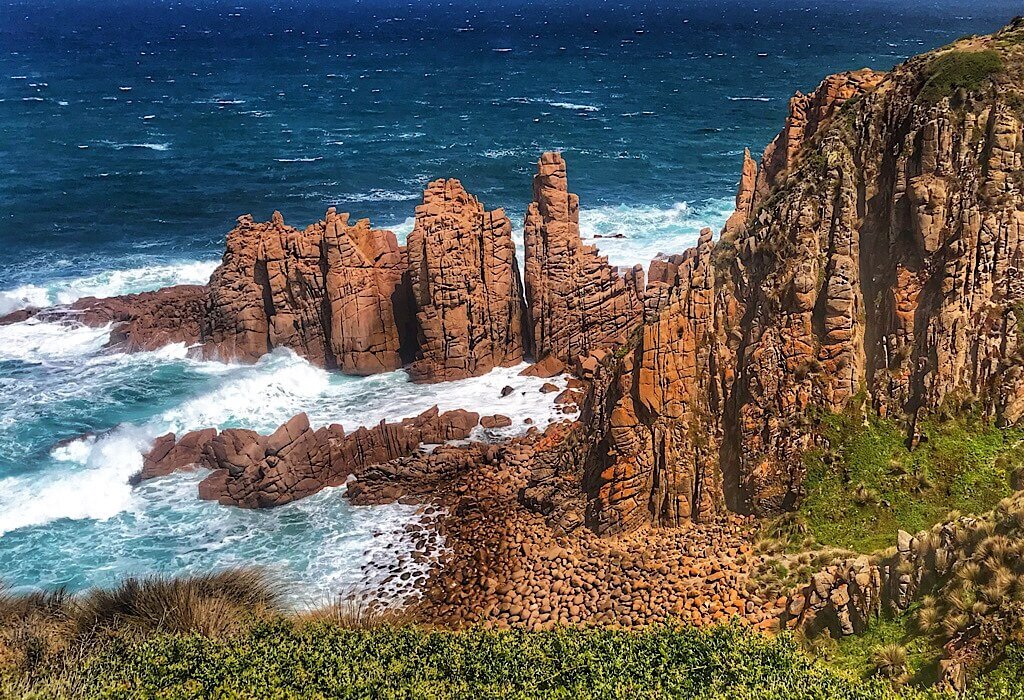
Parking at the visitor center on Philip Island we headed out to see the Nobbies. The Nobbies are tiny islands off the point of Philip Island. I could see that the wooden path descended down the edge of the mountainside but it felt like I was walking uphill. Once again we were in the roaring 40’s. Winds at this latitude have very few landmasses to slow them down and when they blow they roar. I tightened my hoodie tight around my face to keep it from blowing off my head and held my phone with both hands in an attempt to take a steady picture as the wind whipped me around.
There is something magical about the sea in winds such as these, they crash and roar to the wind’s namesake the jagged rocky shoreline spraying its foam skyward. It shouts in words that I do not know how to utter and they have me spellbound.
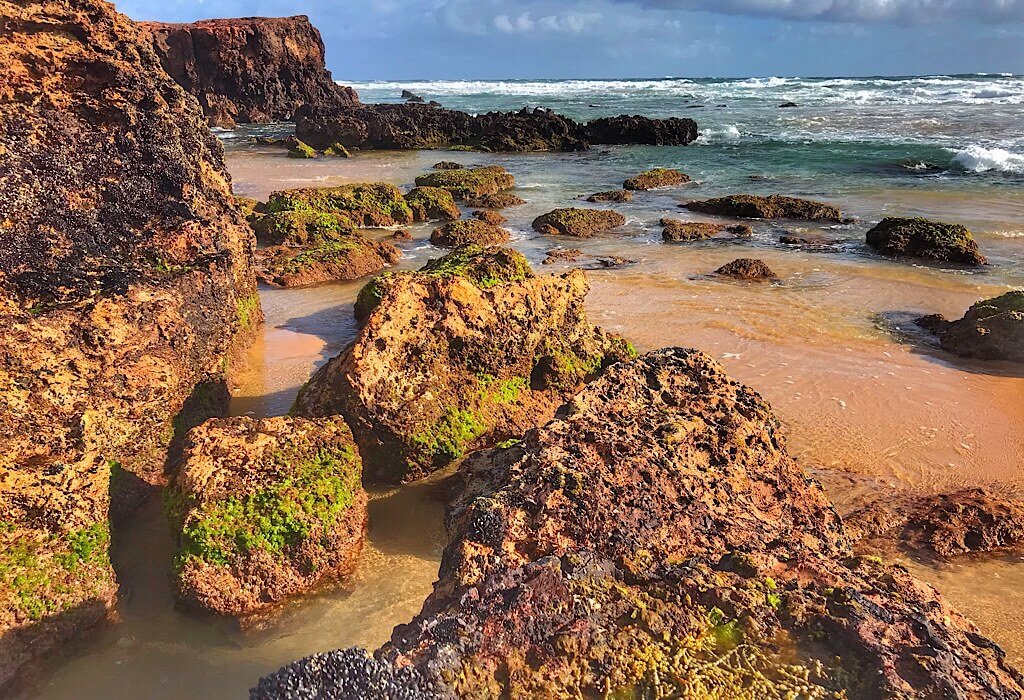
Wind is everything
When it comes to weather on our travels so far here in Australia it’s all about the wind. The first time I heard the weatherman on a local station I was lost.
“We have winds from the South Southeast in the north and a westerly coming in strong on Sunday. Then in the south, we have…: That is not a direct quote, it probably doesn’t even make sense to a weatherman, but that is what it sounded like to me.
Now that I’ve learned more about the geography and wind patterns I’m starting to understand the weatherman. The temperature is all about the direction the wind is blowing. Australia is in the middle of a vast ocean caught between an equator heated by the sun and the frozen continent of Antarctica. Not much lies between in either direction that will redirect or change the wind, it’s all open water.
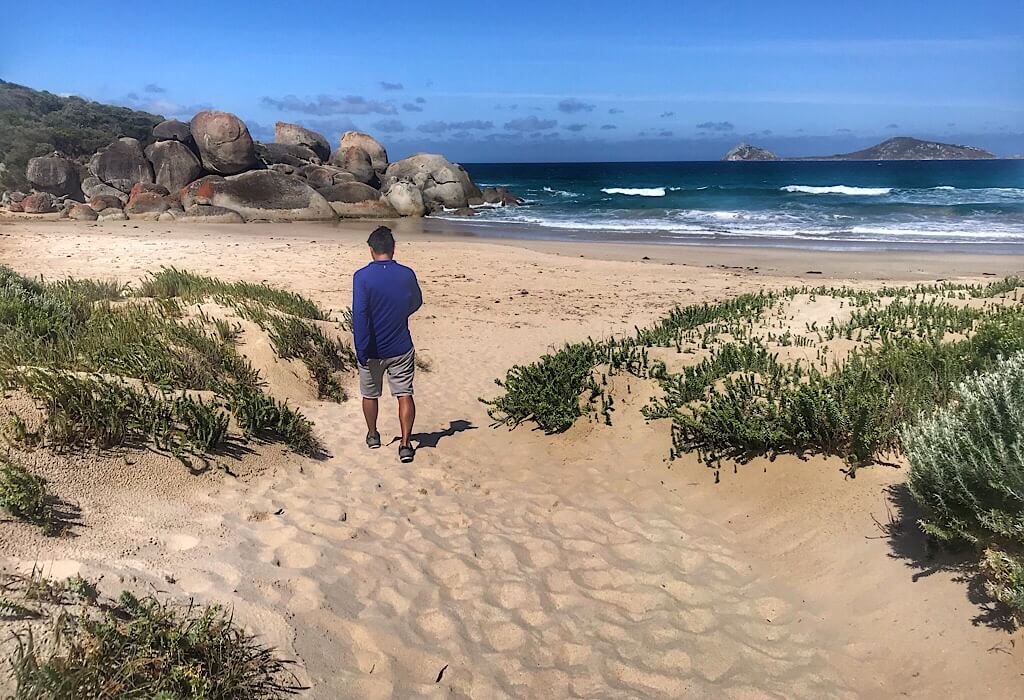
Insulated from its power
While living in the northern hemisphere, it was easy to forget how much the winds impact the weather because there are so many landmasses that can insulate us from the daily power of this unseen force. We may have hurricanes and strong winds once in a while, but generally, the winds are muted. Hiking in Patagonia was an experience with the wild winds off the ocean over the narrow end of South America. Here in Australia, back once again in the Southern hemisphere, I am reminded of her power on a daily basis.
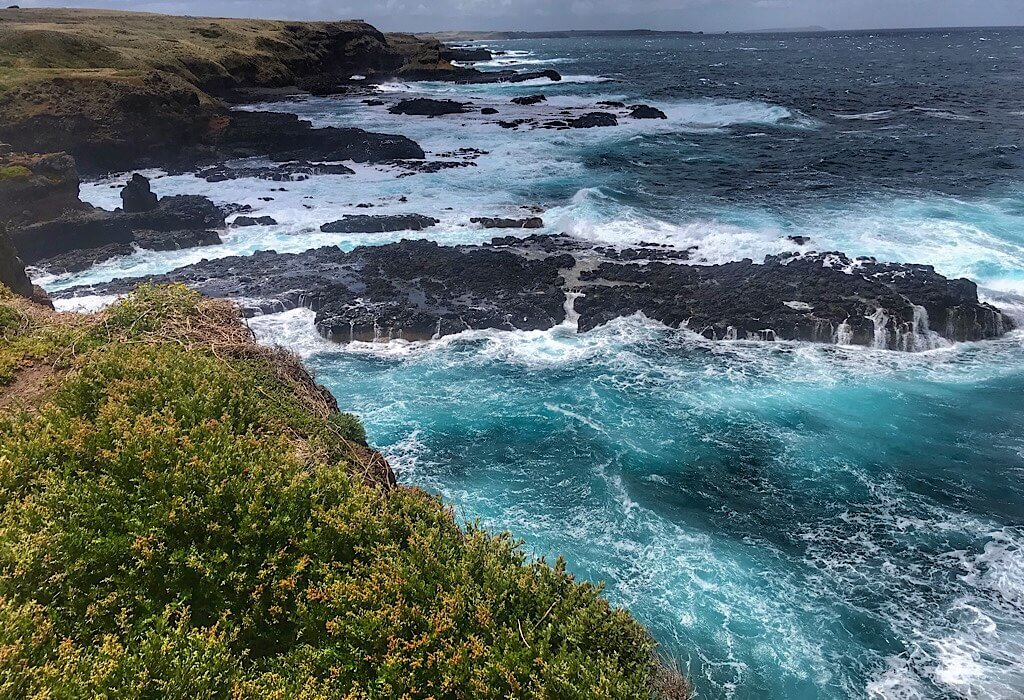
Because there are so many factors behind the force of wind including polar caps and oceans, temperatures of the land and its topography, is it any wonder that in this lowest, flattest continent isolated in the middle of a vast ocean, the wind seems uninhibited in its power?
We cannot see the wind, but we feel it and its power. It is an obvious force across our entire planet. It moves upon the face of the earth and leaves evidence of that which is unseen. A parable brought to us in gusts telling the story that even the rocks cry out. Are we listening?


Loving the pics guys. I am curious to hear about the solar protection you installed in the windows?
Thanks! We purchases a roll of Ametalin SilverSark from Bunnings. I made shades for each window that I can roll up or down behind the curtains. It reflects the sun really well keeping much of the heat out.
Love love love! The pictures are absolutely stunning. By far, this is the most gorgeous country that you have been to so far. Or maybe, I’m just partial to the ocean. No matter how fierce it is, there is still something calming about it.
Thank you Jackie we have been blown away by the beauty here (pun intended:)
Back in Victoria. Woo hoo..Its really lovely as a local to read your blog from a tourist view.
There have been so many beautiful areas in Victoria. I’m not even sure which ones to write about this next week. So much to choose from.
Fantastic Post Bonnie! You have managed to avoid all the bushfires so far! So glad that you are getting to see everything unspoilt and with no stress. Please continue to take this good luck with you and stay safe!
Shaun
Thank you we are trying to keep track of the fires and stay out of the way. We should be on your side of the continent by the end of the month.